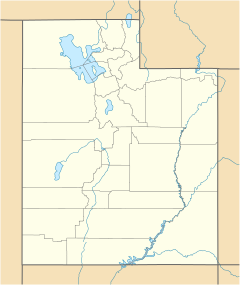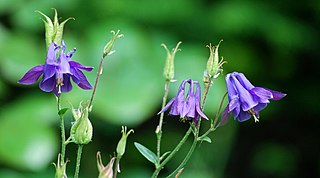
Aquilegia is a genus of about 130 species of perennial plants that are found in meadows, woodlands, and at higher elevations throughout the Northern Hemisphere, known for the spurred petals of their flowers.
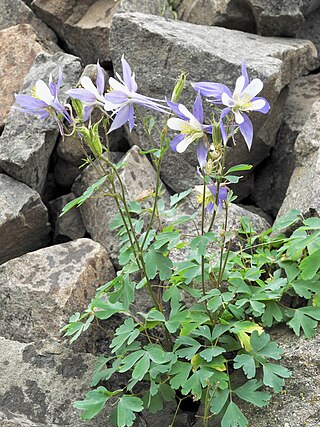
Aquilegia coerulea, the Colorado columbine, Rocky Mountain columbine, or blue columbine, is a species of flowering plant in the buttercup family Ranunculaceae, native to the Rocky Mountains and some of the surrounding states of the western United States. It is the state flower of Colorado. The Latin specific name coerulea means "sky blue".

Aquilegia chrysantha, the golden columbine, is a perennial herbaceous flowering plant native to the southwestern United States and northwestern Mexico. The plant, with a height of between 40 centimetres (16 in) and 120 centimetres (47 in), has yellow flowers. A. chrysantha. as with other members of the Aquilegia coerulea species complex, is evolved for pollination by hawkmoth. It favors moist environments in its mountainous range.
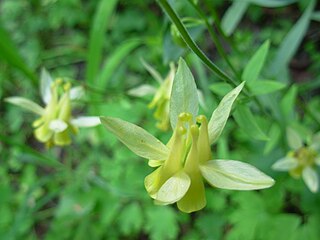
Aquilegia flavescens, the yellow columbine, is a perennial species of flowering plant in the family Ranunculaceae, native to the Rocky Mountains of the United States and Canada.
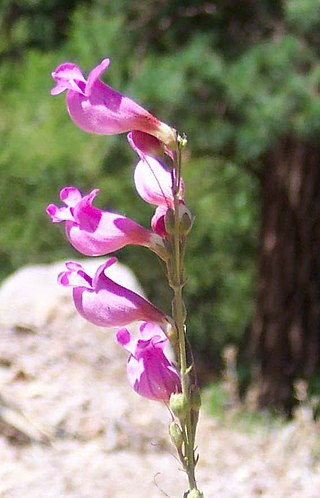
Penstemon floridus is a species of flowering plant in the plantain family known by the common names Panamint penstemon and rose penstemon.
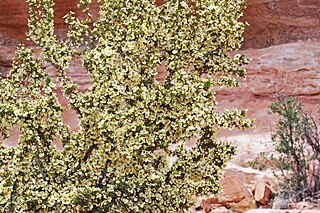
Purshia stansburyana is a species of flowering plant in the rose family known by the common name Stansbury's cliffrose. It is native to the southwestern United States and northern Mexico, where it grows in woodlands, desert, and plateau habitat. It often grows anchored on cliffs and prefers rocky, granular soils, especially limestone.

Penstemon angustifolius is a perennial semi-evergreen forb belonging to the plantain family. This species is 1 out of roughly 273 species of Penstemon. This species is also known as broadbeard beardtongue. This forb is native to central United States and can be noticed by its brightly and highly variable colored flowers.
Phacelia cronquistiana is a plant species native to Utah and Arizona, known only from Kane and Mohave Counties. It occurs in sagebrush and Pinus ponderosa forests at elevations of 1,900–2,100 m (6,200–6,900 ft).
Camissonia bairdii is a plant species endemic to Washington County, Utah. It occurs in clay soil in pinyon-juniper woodlands. The species is classified as critically imperiled.

Astragalus utahensis, commonly called the Utah milkvetch, is a species of plant in the legume family.
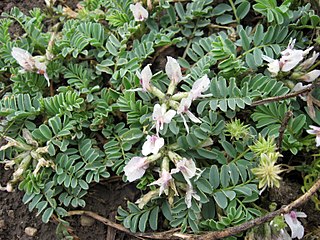
Astragalus cibarius, commonly called the browse milkvetch, is a species of plant in the legume family.

Patricia May Holmgren is an American botanist. Holmgren's main botanical interests are the flora of the U.S. intermountain west and the genera Tiarella and Thlaspi. Holmgren was the director of the herbarium at the New York Botanical Garden from 1981–2000, and editor of Index Herbariorum from 1974–2008.

Aquilegia viridiflora, commonly known as the green columbine or green-flowered columbine, is a perennial flowering plant in the family Ranunculaceae, native to southern Siberia, northern China, Mongolia, and Japan.

Aquilegia desertorum, the desert columbine, is a perennial species of flowering plant in the family Ranunculaceae, native to the Southwestern United States.

Aquilegia micrantha, the Mancos columbine or Bluff City columbine, is a perennial species of plant in the family Ranunculaceae, native to Utah, Colorado, and Arizona.

Penstemon ophianthus, the coiled anther penstemon, is a species of small perennial plant in the plantain family. It has very noticeable dark violet lines on its flowers over a lighter blue-lavender color. The species grows in the plateaus and canyon lands of western Colorado and New Mexico, northern Arizona, and southern Utah.
Aquilegia atwoodii, commonly known as Atwood's columbine, is a perennial flowering plant in the family Ranunculaceae, endemic to Utah.

Penstemon moffatii, commonly called Moffat penstemon, is a flowering plant from the mesas and canyons of western Colorado and eastern Utah.

Castilleja scabrida, commonly known as rough paintbrush or Eastwood paintbrush, is a species of plant in Castilleja, the paintbrush genus from the Intermountain West mainly in the states of Nevada, Utah, and Colorado.

Aquilegia fosteri, common name Foster's columbine, is a perennial flowering plant in the family Ranunculaceae, native to Utah and Arizona.


